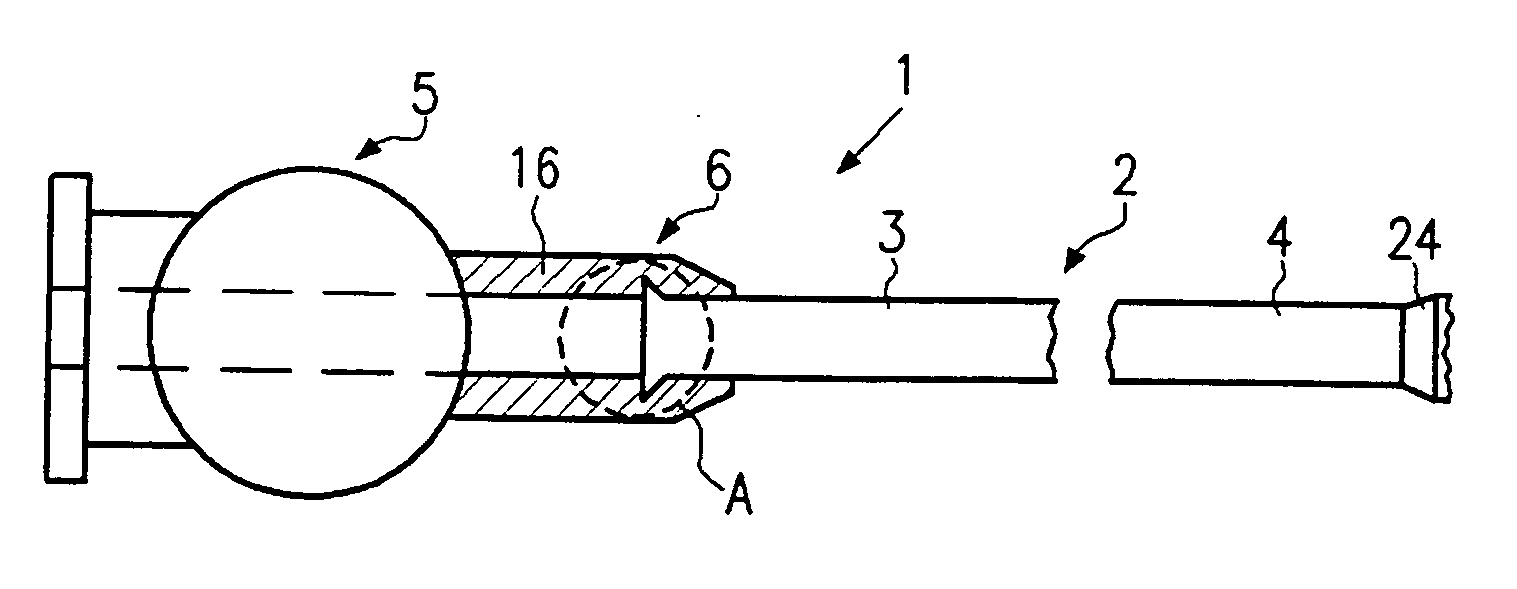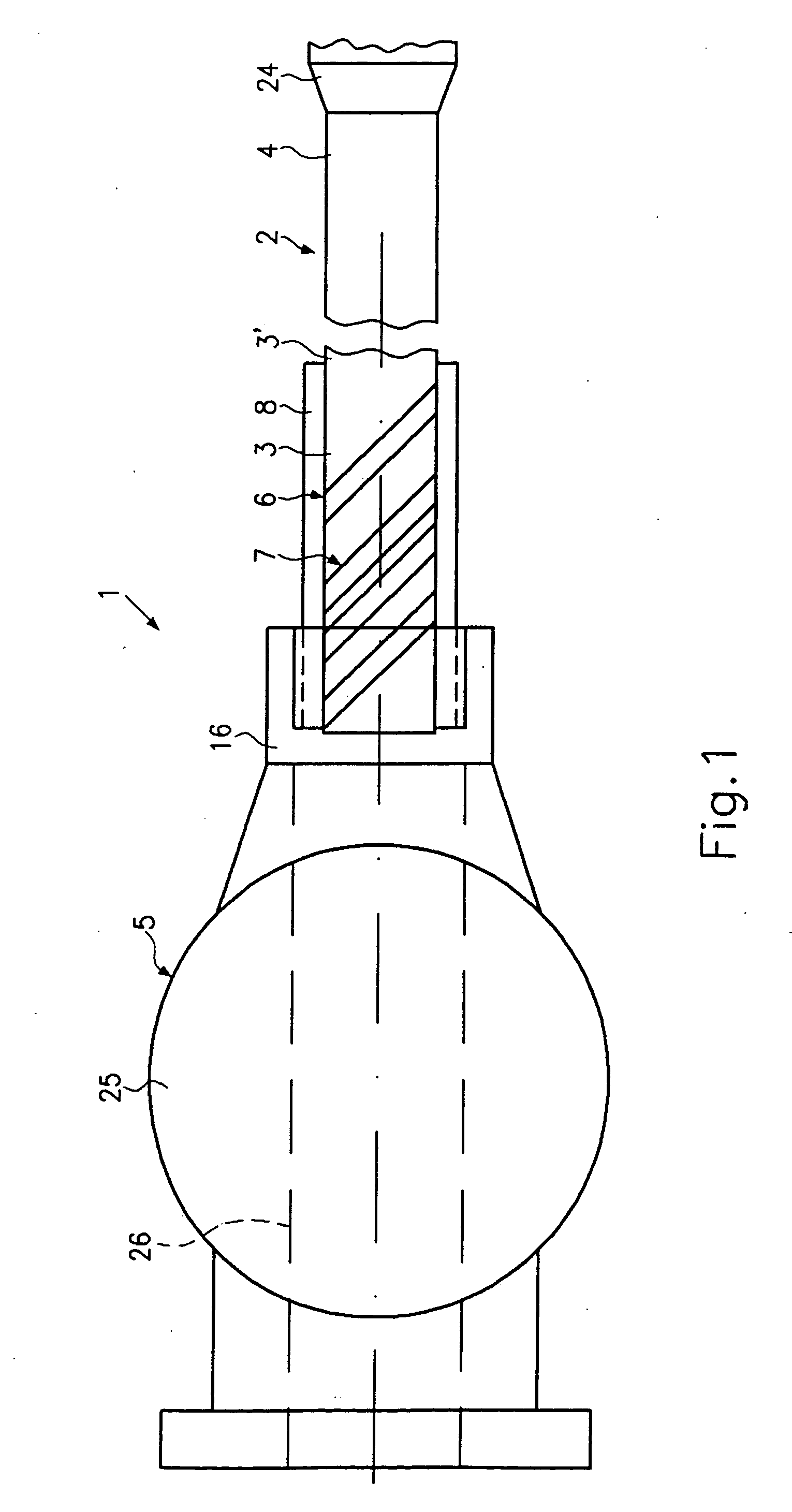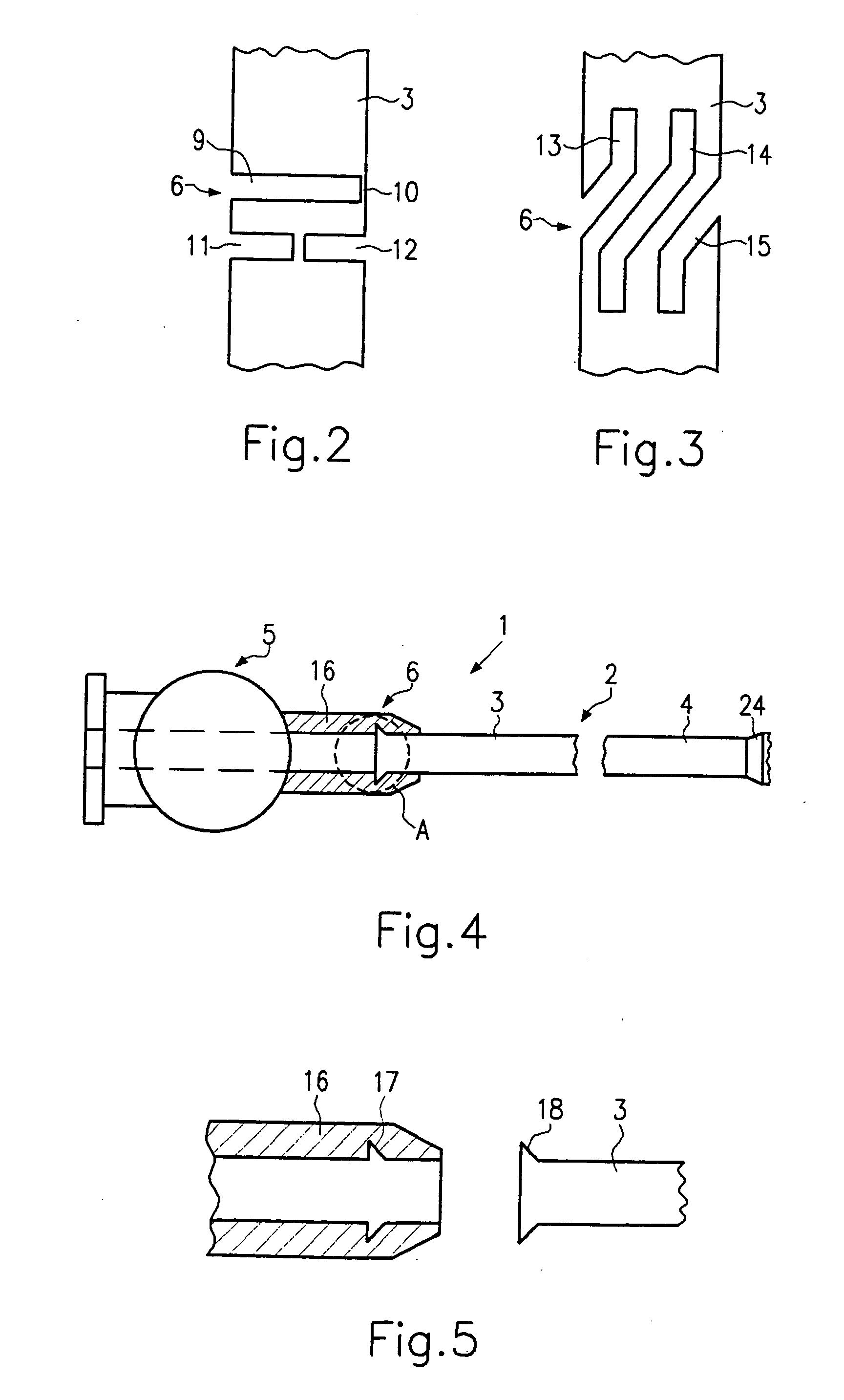Catheter
- Summary
- Abstract
- Description
- Claims
- Application Information
AI Technical Summary
Benefits of technology
Problems solved by technology
Method used
Image
Examples
third embodiment
[0039] Referring now to FIG. 6, a catheter 1 in accordance with a third embodiment will now be explained. In view of the similarity between the third and prior embodiments, the parts of the third embodiment that are identical to the parts of the prior embodiments will be given the same reference numerals as the parts of the prior embodiments. Moreover, the descriptions of the parts of the second embodiment that are identical to the parts of the first embodiment may be omitted for the sake of brevity. Reference can here be made to the above explanations.
[0040] In this embodiment, the bending section 6 comprises a plurality of balls 19 to 23 mounted on the proximal end 3. Said balls can be fixed to the catheter shaft 2 by way of different fastening possibilities as have been explained at the outset. In the embodiment shown in FIG. 6, a heat shrinkable tube 27 is provided for this purpose, said tube being connected at one end to the catheter shaft 2 and fixed at the other end to the fi...
PUM
 Login to View More
Login to View More Abstract
Description
Claims
Application Information
 Login to View More
Login to View More - R&D
- Intellectual Property
- Life Sciences
- Materials
- Tech Scout
- Unparalleled Data Quality
- Higher Quality Content
- 60% Fewer Hallucinations
Browse by: Latest US Patents, China's latest patents, Technical Efficacy Thesaurus, Application Domain, Technology Topic, Popular Technical Reports.
© 2025 PatSnap. All rights reserved.Legal|Privacy policy|Modern Slavery Act Transparency Statement|Sitemap|About US| Contact US: help@patsnap.com



